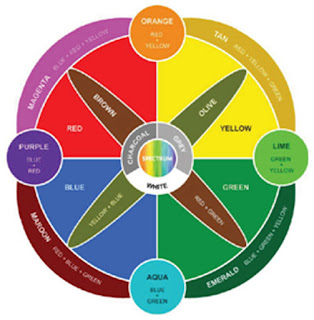Understanding SPECTRUM
This blog post is in support of the SPECTRUM evaluation tool available online from www.evaluationstore.com. Although just one of a number of profiling tools available, SPECTRUM was initially designed for Evaluation Store by Poppyfish Associate Steve Jarrett and benefits from being one of the more affordable profiling tools for those taking their first steps with this approach.
What is SPECTRUM?
One of the key ways that learning and development programmes can promote organisational development is through changed individual behaviours. As
we develop new skills and new awareness so we change our behaviour to achieve
better outcomes. The SPECTRUM™ questionnaire provides you with valid
information about your own behavioural preferences and your impact on the
people around you.
Introducing the colours.
The SPECTRUM™ evaluation uses a simple
system of colours to explain our different behavioural preferences and
tendencies. The four basic colours – RED, GREEN, BLUE, YELLOW, give us the
overview. Your responses to the questionnaire will generate two colours being
assigned to you. One colour for ‘normal’ behaviour, and one for ‘stressed’
behaviour. The colours are easy to
understand:
Think of Red
– what do you imagine? Fire, Blood, Heat, Danger. Change these words for
assertive, risk taking, hot headed, strong minded, action orientated and you
have a short profile of red behaviour.
Think of Blue
and you could be thinking cold, water, sky, icebergs. Substitute these words
for calculating, calm, unemotional, logical thinking and safety and you have
blue behaviours.
Green might include nature, trees, ecological ideals,
peace. Substitute these words for friendly, growing relationships, strong
ideals of fairness and justice and you can understand how someone with a
‘green’ preference may behave.
Lastly, imagine Yellow and you may see the sun, brightness and maybe gold. Substitute these words for positive, smile, warm & happy and you will see the key characteristics of yellow behaviour.
But your assessment isn’t restricted to just four colours. Most of us use more than one of these behaviours and we prefer to blend maybe two, three - or in some cases all four - together. Your SPECTRUM™ report will explore this by blending the colours to give the balance that most closely matches your questionnaire response. For instance, if we mix blue and red we get purple – describing a range of behaviours built around task focus and being self reliant. If we combine yellow and red we see orange – focused on the future and using intuition. And so on across the spectrum of colours. Your SPECTRUM™ profile will include full detail on your own results.
By completing the SPECTRUM™ questionnaire
you may learn more about your own behaviour and the way that you are might be perceived by others, information that can be really helpful if you are wanting to make lasting change. And if a large number of people in an organisation can also take the questionnaire then we can start to get some insight and appreciation of the way the
organisation, and the teams within it, might behave, and how they might appear
to third parties. And knowing that can help us to reinforce and make the best
of our strengths whilst also allow us to identify areas for potential
developments that will deliver improved organisational effectiveness.






Comments
Post a Comment